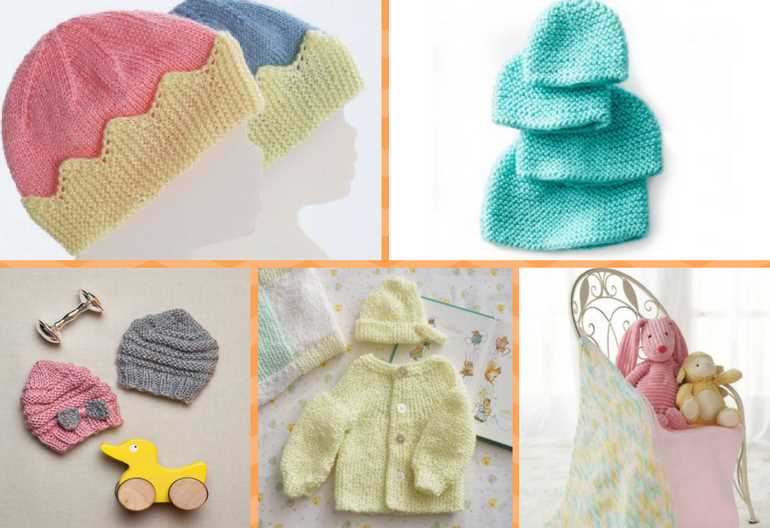
When a newborn baby enters the world, they need all the love and care they can get. One important aspect of their care is keeping them warm, especially in the first few days of their life. Many hospitals use knit hats to help regulate the baby’s body temperature and provide a cozy, comfortable environment.
If you have a knack for knitting and want to contribute to this cause, creating newborn knit hats for hospitals could be a fulfilling and practical project. Not only will your creations keep newborns warm, but they can also provide a touch of joy and comfort during their first few days.
Making a knit hat for a newborn is a relatively simple and quick project, making it perfect for both beginners and experienced knitters. With a few basic knitting techniques and materials, you can create a hat that will be cherished by both the newborn and their parents.
When knitting hats for hospitals, it is important to consider the material used. Soft, hypoallergenic yarn is a must, as it will be gentle on the baby’s delicate skin. Additionally, choosing yarn in bright and cheerful colors can bring a smile to the parents’ faces and brighten up the hospital environment. Remember, these hats will serve as a gift of warmth and love, so putting in the extra effort to choose the perfect materials is worth it.
Benefits of providing newborn knit hats in hospitals
Providing newborn knit hats in hospitals offers several benefits for both the babies and their parents. These small accessories not only serve as a fashionable addition to a baby’s wardrobe, but they also have practical advantages that make them an essential item for newborns.
Promoting warmth and comfort: Newborn babies have sensitive skin and are more susceptible to changes in temperature. Knit hats help keep their heads warm, preventing heat loss and providing an overall sensation of comfort. This is especially important in hospitals, where the environment may be colder due to air conditioning or medical procedures.
Preventing heat loss: Heat loss is a common concern for newborns, as they have difficulty regulating their body temperature. A knit hat acts as a barrier against the cold, reducing the risk of heat loss through the head. By keeping the baby warm, it can help prevent hypothermia and support the baby’s overall well-being.
In addition to the practical benefits, providing newborn knit hats in hospitals also has emotional advantages. Creating a sense of identity: By providing a knit hat, hospitals give newborns a unique and personal accessory. This small item can help parents feel more connected to their baby and create a sense of identity for the newborn. It also allows for easier identification of the baby in a hospital setting, as each baby can have a distinct hat color or design.
Fostering a sense of care and support: The provision of newborn knit hats shows that hospitals prioritize the well-being and comfort of their patients. By providing these hats, hospitals demonstrate their commitment to providing a caring and supportive environment for newborns and their families. This gesture can go a long way in establishing trust and building a positive relationship between the hospital staff and the newborn’s family.
In conclusion, providing newborn knit hats in hospitals offers both practical and emotional benefits. They help keep newborns warm and prevent heat loss, while also fostering a sense of identity and care. These small accessories can make a big difference in the overall well-being and experience of newborns and their parents during their hospital stay.
Importance of providing warmth for newborns
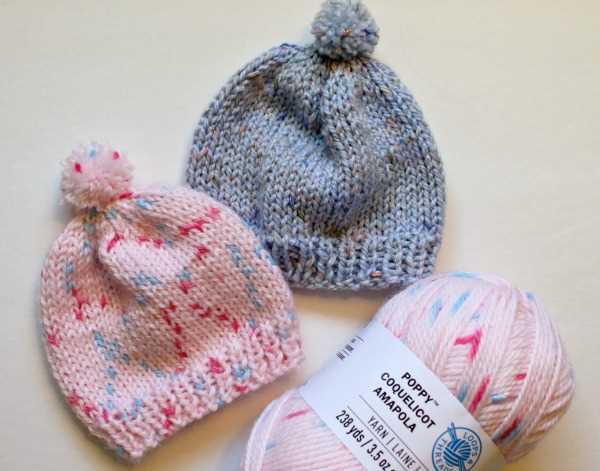
In the delicate early days of a newborn’s life, it is crucial to provide them with the warmth they need for proper development and comfort. Newborns are not able to regulate their body temperature as effectively as adults, making it essential to ensure they are kept warm at all times.
Warmth is vital for newborns because their bodies are still developing and adjusting to life outside the womb. The transition from the controlled environment of the mother’s womb to the outside world can be a shock to their system, and maintaining a stable body temperature helps their bodies function optimally.
One effective way to provide warmth for newborns is through the use of knit hats. Knit hats are designed to fit snugly on the newborn’s head, helping to retain heat and prevent heat loss through the head. This is especially important as newborns lose heat rapidly through their heads, making them more susceptible to becoming cold.
Providing warmth not only helps keep the newborn comfortable, but it also has a positive impact on their overall health and well-being. Warmth promotes proper circulation, which aids in the delivery of oxygen and essential nutrients to their developing bodies. It also helps support their immune system, as a warm environment can help prevent the growth of harmful bacteria.
- One way to ensure the warmth of newborns is by providing them with knit hats.
- Knit hats help retain heat and prevent heat loss through the head, which is important for newborns.
- Warmth promotes proper circulation and supports the newborn’s immune system.
- By providing warmth, we can help newborns thrive and develop in the best possible way.
How to choose the right yarn for newborn knit hats
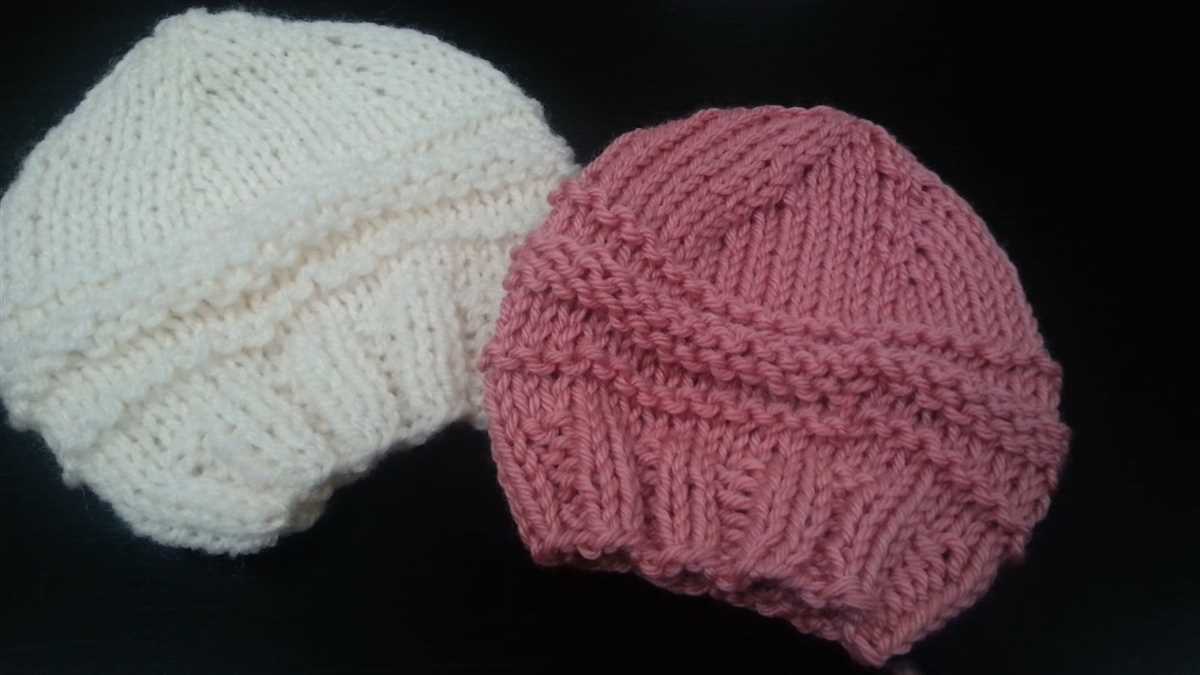
When it comes to knitting newborn hats for hospitals, it’s important to choose the right yarn that is both soft and safe for delicate baby skin. Here are some factors to consider when selecting yarn for newborn hats:
1. Softness:
Choose yarn that is exceptionally soft and gentle against the baby’s sensitive scalp. Look for yarn made from materials like cotton, bamboo, or merino wool, as they tend to be softer and less likely to cause irritation.
2. Hypoallergenic:
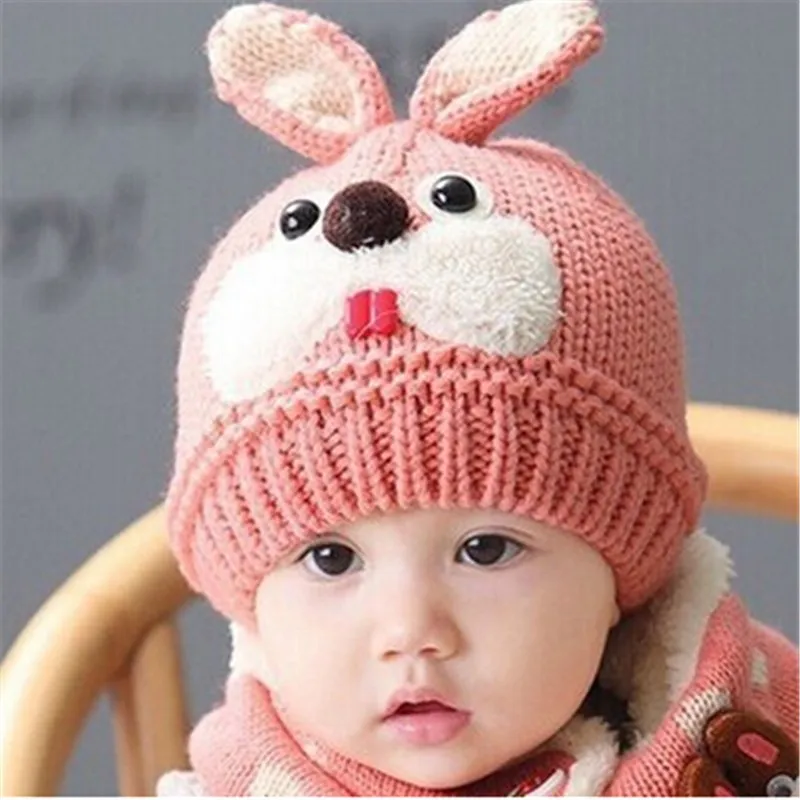
Opt for hypoallergenic yarn to reduce the risk of allergies or skin irritations. Many hospitals have strict guidelines regarding the use of hypoallergenic materials, so selecting yarn that meets these requirements is essential.
3. Machine washable:
Newborn hats are bound to get dirty, so it’s important to choose yarn that is machine washable. This ensures easy care and maintenance for busy hospital staff and new parents.
4. Lightweight:
Avoid using bulky or heavy yarn, as they may be uncomfortable for newborns. Lightweight yarn allows the hat to have a comfortable fit and provides better breathability for the baby’s delicate skin.
5. Size and length:
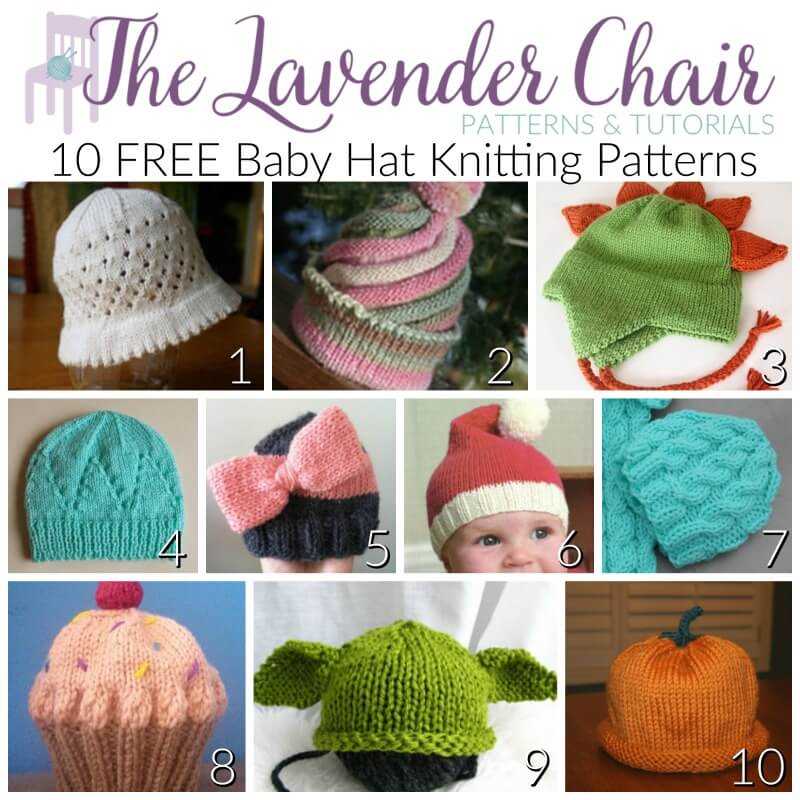
Consider the size and yardage of the yarn. Since newborn hats are small projects, it’s best to choose yarn in smaller skeins or balls to avoid excess wastage.
By considering these factors and selecting the right yarn, you can create beautiful and comfortable knit hats for newborns in hospitals. It’s important to follow any specific guidelines or regulations provided by the hospital to ensure the hats meet their requirements.
Step-by-step guide to knitting a newborn hat
If you want to create a special gift for a newborn baby, why not try knitting a newborn hat? Not only is it a thoughtful and personalized present, but it also provides warmth and comfort for the little one. Follow this step-by-step guide to knitting a newborn hat, and you’ll have a beautiful creation in no time.
Materials needed:
- Size 8 circular knitting needles
- Yarn (preferably a soft and lightweight option)
- Tapestry needle
- Scissors
Step 1: Cast on stitches
Begin by casting on 64 stitches using the size 8 circular knitting needles. This will be the starting point for your newborn hat.
Step 2: Knit the brim
Next, work the brim of the hat by knitting every stitch in a rib stitch pattern for the first 1.5 inches. This will help create a snug and comfortable fit around the baby’s head.
Step 3: Transition to stockinette stitch
Once the brim is complete, switch to stockinette stitch by continuing to knit every stitch. This will add some texture and visual interest to the hat.
Step 4: Create the crown
When the hat measures approximately 4.5 inches from the beginning, it’s time to shape the crown. You can do this by decreasing stitches evenly across each round until you have 8 stitches remaining.
Step 5: Finish the hat
To finish off the hat, cut the yarn leaving a long tail. Thread the tail through a tapestry needle and slide it through the remaining stitches, removing them from the knitting needles. Pull tight to close the top of the hat and secure the yarn. Weave in any remaining loose ends with a tapestry needle.
And that’s it! You’ve successfully knitted a newborn hat. Now, you can gift it to a newborn baby or donate it to a hospital for a little one in need. It’s a small project that can make a big difference in providing comfort and warmth. Happy knitting!
Tips for knitting newborn hats efficiently
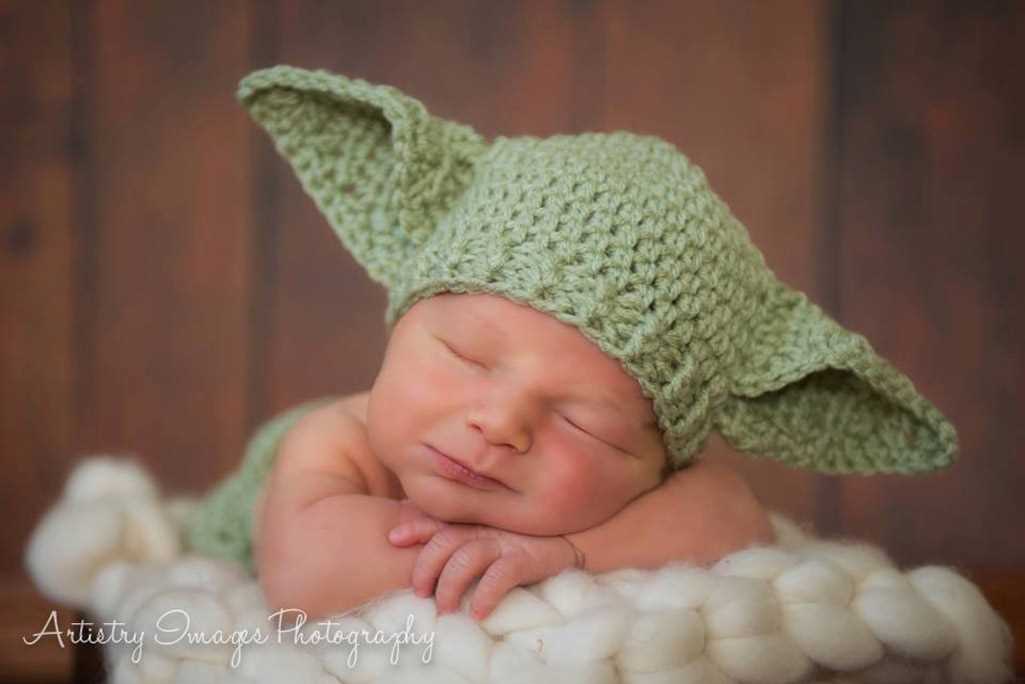
When knitting newborn hats for hospitals, it is important to be efficient with your time and resources. Here are some helpful tips to make the process easier:
1. Use a simple and quick pattern
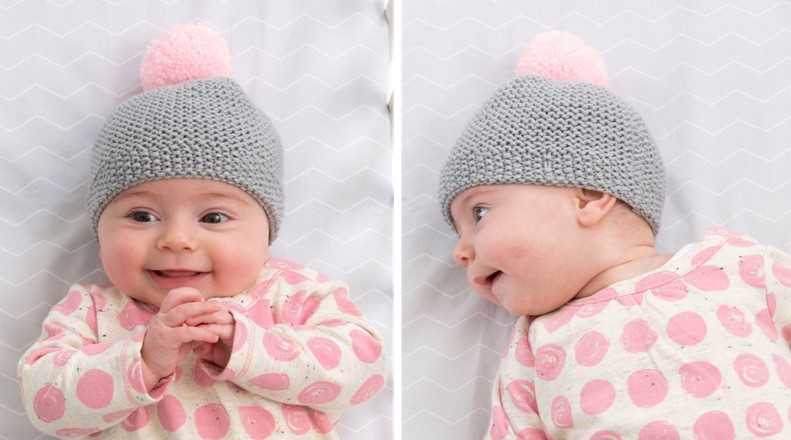
Choose a knitting pattern that is easy to follow and quick to knit. A basic beanie pattern with a ribbed brim and stockinette stitch body is a popular choice for newborn hats. This will allow you to knit them quickly without getting too complicated.
2. Gather all your materials beforehand
Before you start knitting, make sure you have all the necessary materials within reach. This includes your knitting needles, yarn, scissors, stitch markers, and a tapestry needle. Having everything organized and ready will save you time and prevent unnecessary interruptions.
3. Knit in bulk
To maximize efficiency, consider knitting multiple newborn hats at once. This way, you only have to switch between colors or patterns once, reducing the time spent on starting and finishing each individual hat. You can use stitch markers to separate each hat and keep track of your progress.
4. Opt for machine washable yarn
Choose yarn that is machine washable and durable. Since these newborn hats will be used in hospitals, they need to withstand regular washing and sterilization. This will save you time and ensure the hats remain hygienic for the newborns.
5. Take breaks when needed
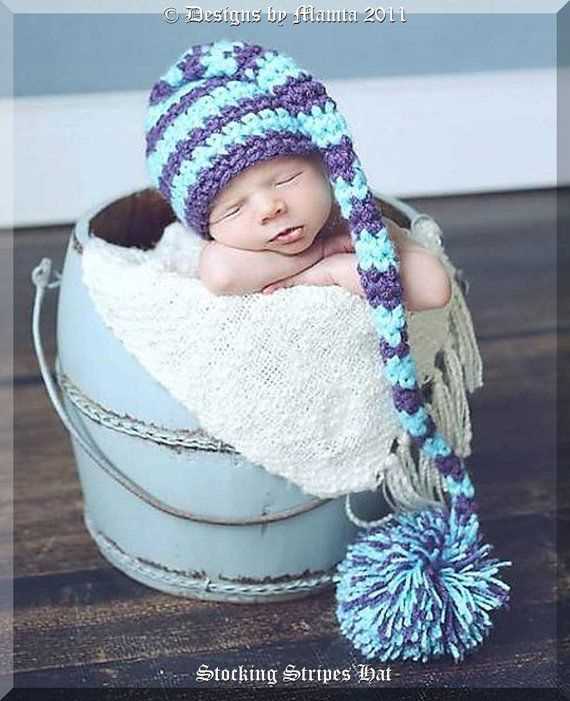
Knitting for long periods of time can strain your hands and wrists. Remember to take regular breaks to stretch and rest your hands. This will prevent fatigue and allow you to maintain a steady knitting pace without discomfort.
By following these tips, you can efficiently knit newborn hats for hospitals, ensuring that the newborns receive warm and comfortable headwear during their stay.
Different knitting patterns for newborn hats
Knitting newborn hats is not only a fun and creative way to spend your time, but it also provides an opportunity to contribute to a good cause. Many hospitals and organizations are in need of newborn hats to keep babies warm and comfortable. There are several different knitting patterns available that you can choose from, depending on your skill level and personal preference.
1. Basic Ribbed Hat: This is a simple pattern that is perfect for beginners. It involves using a combination of knit and purl stitches to create a ribbed texture. The ribbed hat pattern provides a snug fit and is great for keeping newborns warm.
- Materials needed: Worsted weight yarn and size 8 knitting needles.
- Instructions: Cast on 60 stitches. Knit two, purl two in a rib pattern until the hat measures about 4 inches. Decrease stitches evenly and continue the ribbing until you have a small opening at the top. Bind off and weave in ends.
2. Cabled Hat: If you’re looking for a more intricate and advanced pattern, a cabled hat is a great option. The cables create a beautiful and textured design, perfect for showcasing your knitting skills.
- Materials needed: DK weight yarn and size 6 knitting needles.
- Instructions: Cast on 80 stitches. Follow a cable pattern of your choice, knitting and purling as indicated in the pattern. Continue knitting until the hat measures about 5 inches. Decrease stitches evenly and continue the cable pattern until you have a small opening at the top. Bind off and weave in ends.
3. Striped Hat: If you want to add some color and variety to your newborn hat, a striped pattern is a great choice. You can mix and match different colors to create a unique and adorable hat.
- Materials needed: Sport weight yarn in different colors and size 4 knitting needles.
- Instructions: Cast on 60 stitches. Knit two rows in color A, then two rows in color B. Repeat this pattern until the hat measures about 4 inches. Decrease stitches evenly and continue the striping pattern until you have a small opening at the top. Bind off and weave in ends.
These are just a few examples of the many knitting patterns available for newborn hats. Whether you prefer a simple design or want to challenge yourself with a more complex pattern, there is something for everyone. So grab your knitting needles and get started on creating adorable and cozy hats for newborns in need!
Adding Personal Touches to Newborn Hats

When knitting newborn hats for hospitals, adding personal touches can make them even more special. These small details can bring joy and comfort to both the babies and their families. Here are a few ideas on how to add these personal touches:
1. Embroidered Initials
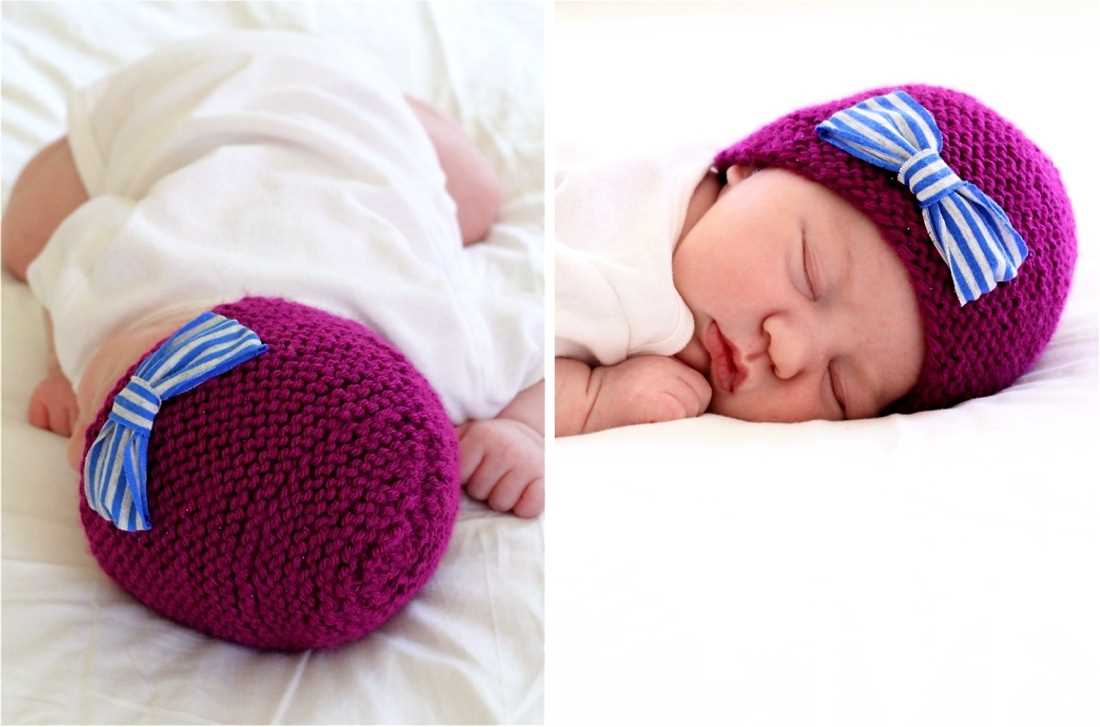
Embroidering the baby’s initials onto the hat is a simple and elegant way to personalize it. You can choose a color that matches the hat or opt for a contrasting thread to make the initials stand out. This personalization adds a unique touch to each hat and makes it even more meaningful to the families who receive them.
2. Decorative Buttons
Adding buttons to the newborn hats can give them an adorable and charming touch. Opt for small, lightweight buttons that are securely sewn onto the hat. Choose buttons in fun shapes or colors to make them visually appealing. Make sure to stitch them tightly to ensure that they won’t come loose and pose a choking hazard.
3. Ribbon Bows
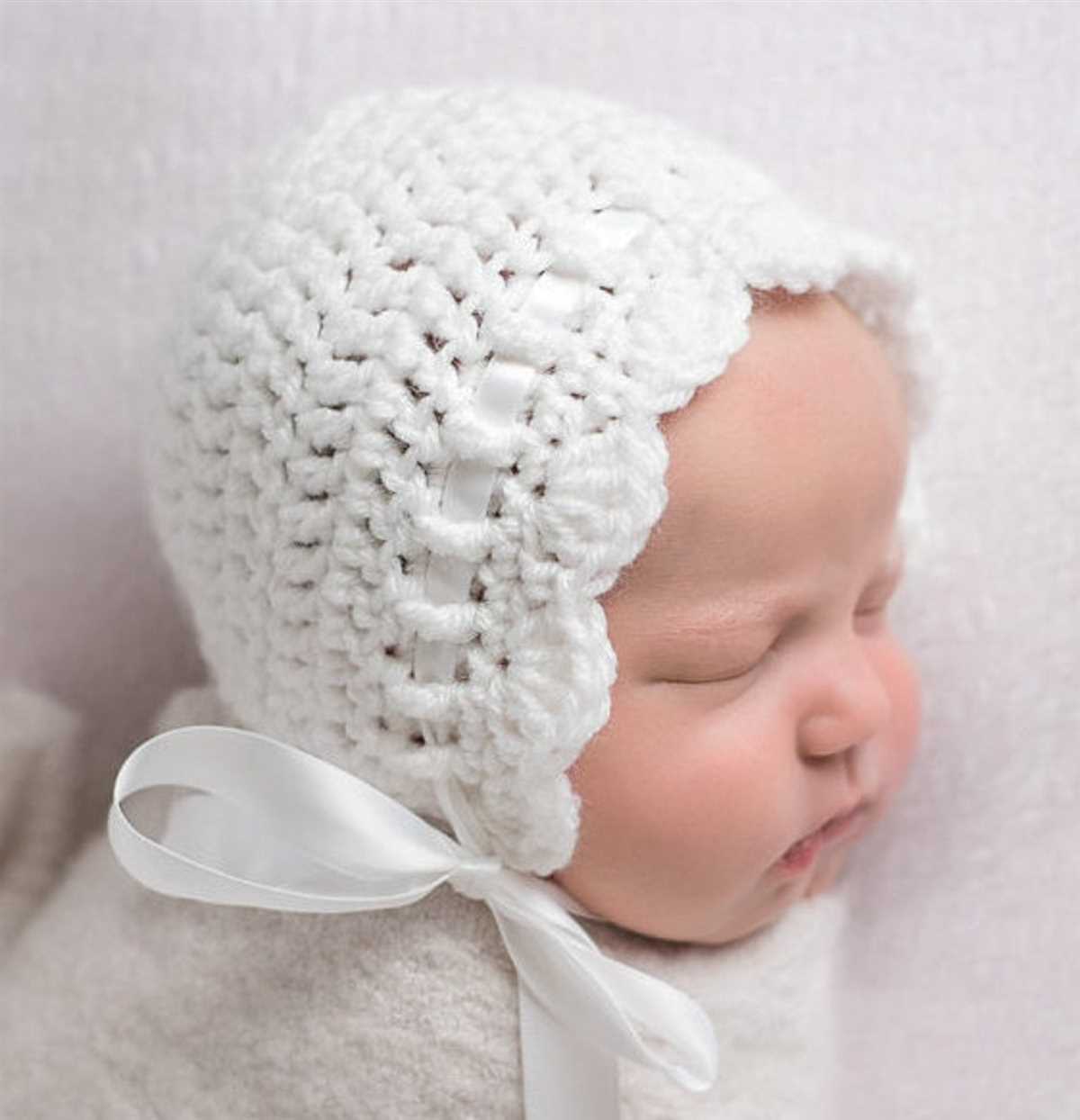
Tying a small ribbon bow around the top or brim of the hat can add a delicate and feminine touch, especially for baby girls. Choose a soft and lightweight ribbon that won’t irritate the baby’s skin. Be cautious of any loose ends and ensure that the bow is securely fastened to avoid any hazards.
4. Customized Pompoms
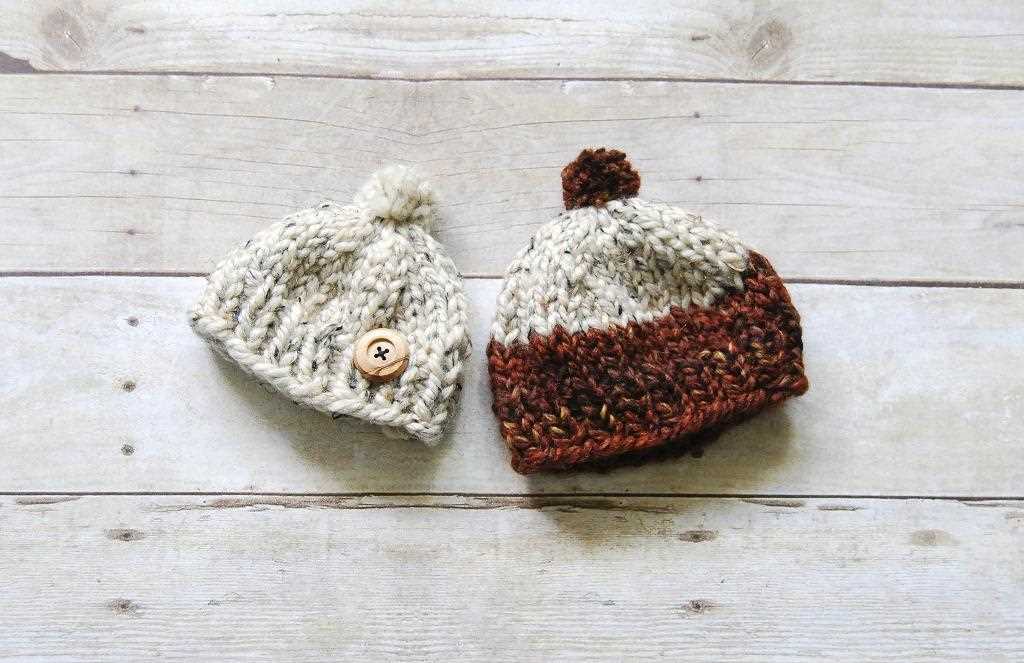
Pompoms are a fun and playful addition to newborn hats. Consider making customized pompoms in various colors that coordinate with the hat’s design. You can create these pompoms using yarn or even use small fluffy pom-poms that can be securely attached to the hat. These fun and unique details are sure to bring smiles to the faces of the babies and their families.
By adding these personal touches, you can transform simple newborn hats into cherished keepsakes for both the families and the babies. These small details show the thought and care that went into creating each hat, providing a warm and welcoming touch to the little ones in the hospital.
Precautions to take when knitting hats for hospitals
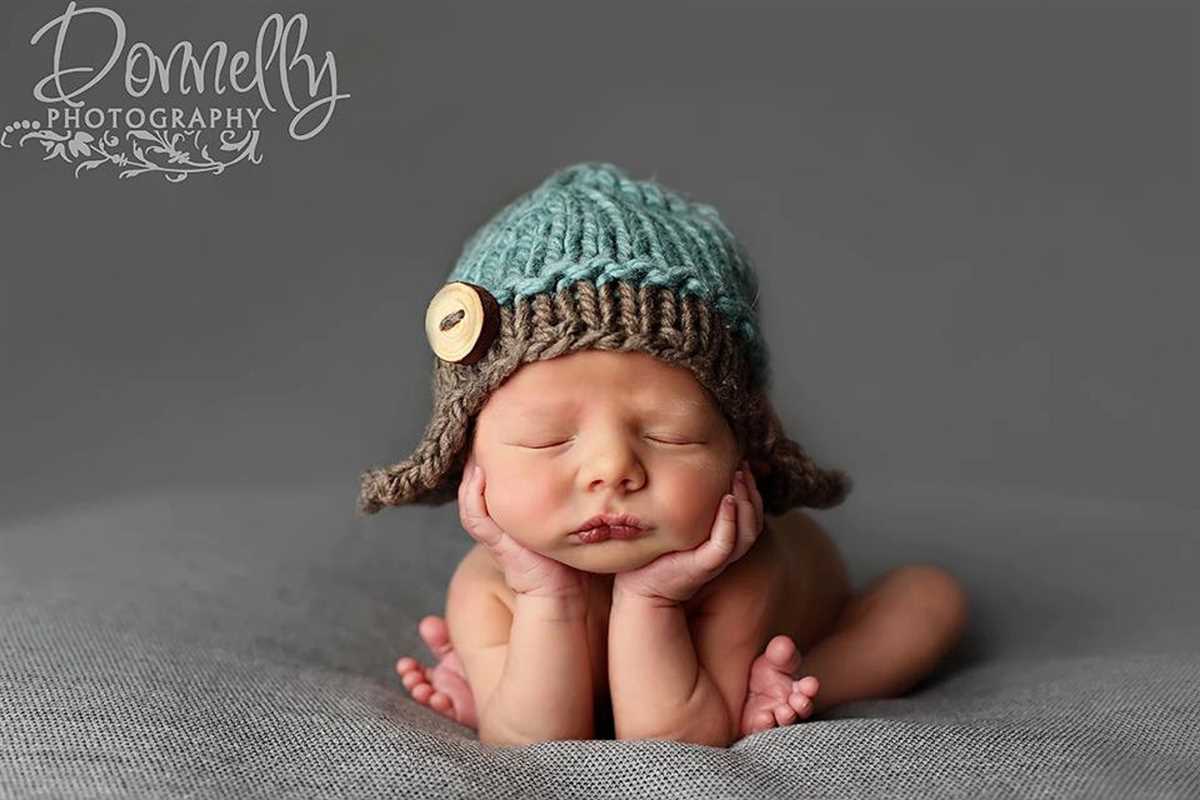
When knitting hats for hospitals, it is important to follow certain precautions to ensure the safety and well-being of the newborns. Here are some guidelines to consider:
1. Use soft and hypoallergenic yarn: Newborn baby’s skin is delicate and sensitive, so it is essential to choose yarn that is soft and gentle on their skin. Opt for hypoallergenic yarns to minimize the risk of any allergic reactions.
2. Clean and sanitize your knitting tools: Before starting your project, make sure your knitting needles or hooks are thoroughly cleaned and sanitized. This helps prevent any potential cross-contamination or transmission of germs to the newborns.
3. Avoid using decorative embellishments: While cute buttons, bows, or other embellishments may add charm to the hat, they can also pose a choking hazard. It is best to avoid using any decorative elements that could potentially cause harm to the baby.
4. Size matters: Pay attention to the size of the hat you are knitting. Newborns have different head sizes, so it is important to make hats that are not too tight or too loose. Consider knitting hats in various sizes to accommodate different newborns.
5. Wash the hats before donation: It is essential to wash the hats thoroughly before donating them to hospitals. This helps ensure that they are clean and free from any potential allergens or contaminants.
6. Follow hospital guidelines: Some hospitals may have specific guidelines or regulations when it comes to accepting knitted hats. Make sure to check with the hospital beforehand and follow their instructions to ensure your hats meet their requirements.
By taking these precautions, knitters can contribute to the comfort and well-being of newborns in hospitals while also ensuring their safety. Hand-knit hats can provide warmth and a sense of care to these little ones, and following these guidelines helps maintain a safe environment for them.
Donating Knitted Newborn Hats to Hospitals
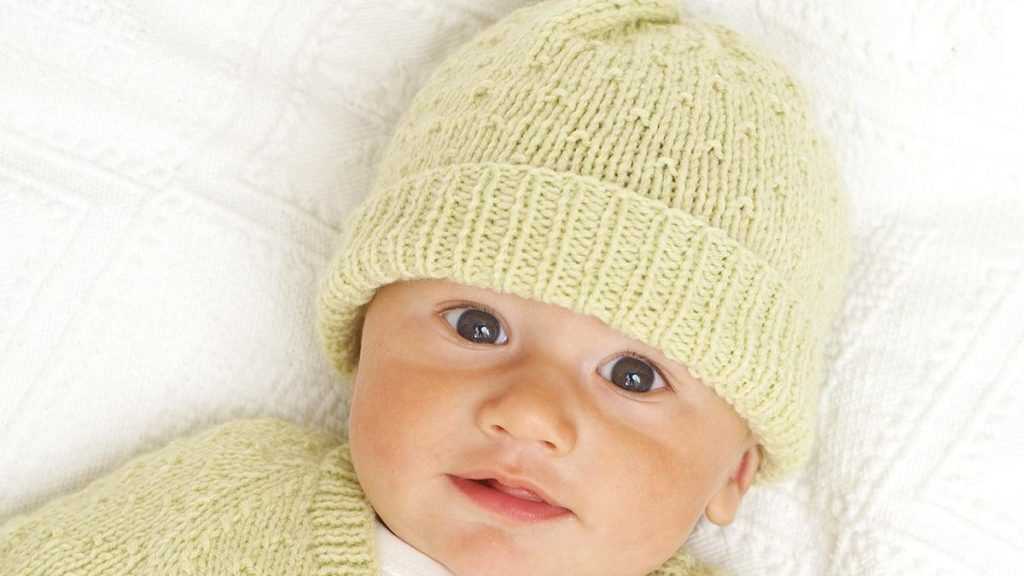
Knitting newborn hats for hospitals is a small but impactful way to contribute to the well-being of newborn babies. Many hospitals have programs in place to provide handmade hats to their youngest patients, and these hats can provide warmth, comfort, and a sense of love and care during a critical time in a baby’s life.
When donating knitted newborn hats to hospitals, it is important to consider the specific requirements and guidelines of each hospital. Some hospitals may have specific color preferences or size requirements, while others may have restrictions on materials due to safety concerns. It is crucial to reach out to hospitals beforehand to ensure that the hats meet their needs and can be accepted.
Here are some key points to keep in mind when donating knitted newborn hats to hospitals:
- Choose soft, hypoallergenic yarn that is gentle on a baby’s delicate skin.
- Consider using washable yarn to make it easier for hospital staff to clean and maintain the hats.
- Stick to neutral colors or colors that are suitable for both boys and girls, as hospitals often prefer gender-neutral options.
- Follow the hospital’s guidelines for hat sizes, as newborns come in different sizes and may require different hat sizes.
- Make sure the hats are properly sanitized before donation to ensure they meet hospital hygiene standards.
Donating knitted newborn hats to hospitals is not only a practical way to contribute to the well-being of babies, but it can also provide a sense of fulfillment and joy for the knitters. Knowing that their handcrafted creations will bring comfort to newborns and their families can be a rewarding experience. So grab your knitting needles, choose a cozy pattern, and start making a difference in the lives of newborns in hospitals!
Feedback from hospitals on the impact of knitted hats
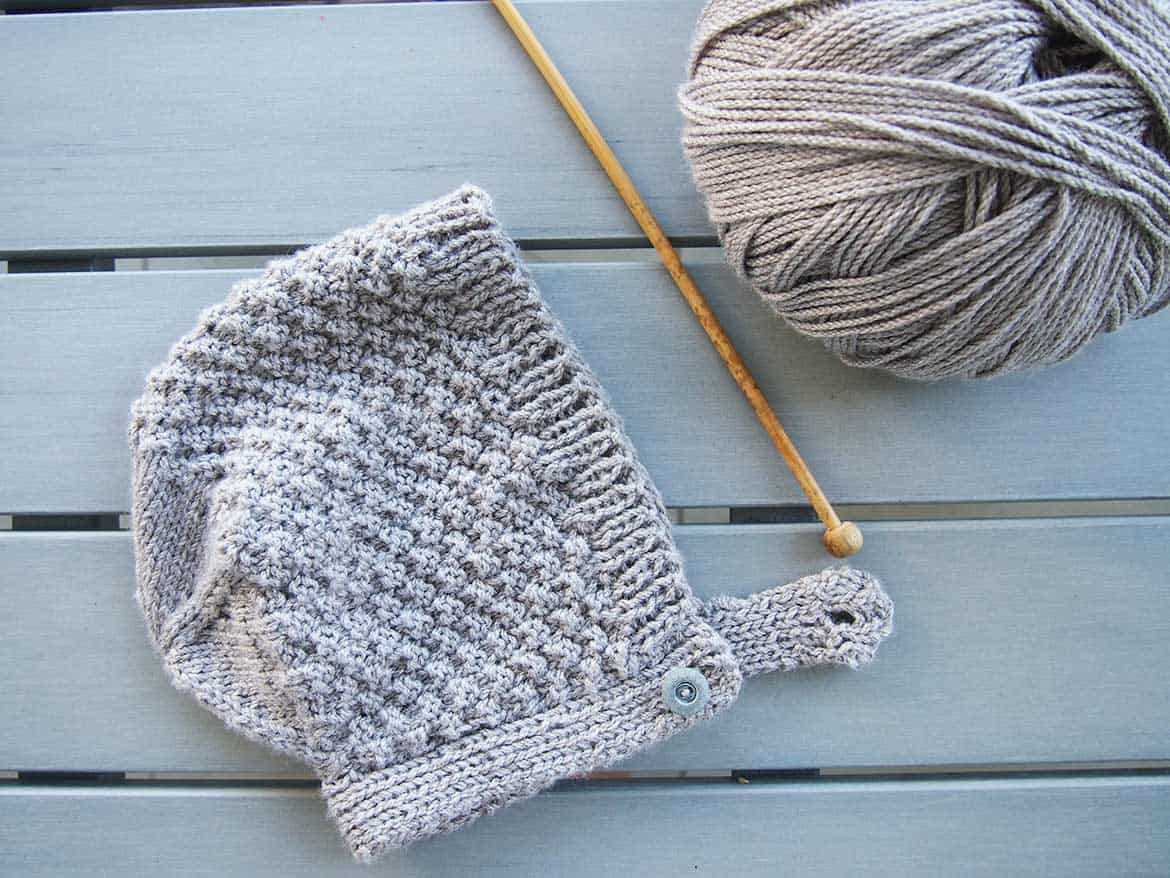
The use of knitted hats for newborns in hospitals has had a significant impact on various aspects of care and support. Hospitals that have implemented the use of these hats have reported positive feedback from both staff and parents, highlighting the benefits and positive outcomes that arise from this simple addition to the care routine.
Enhanced warmth and comfort: One of the primary benefits of providing knitted hats to newborns is the enhanced warmth and comfort they offer, helping to regulate body temperature. Hospitals have noted that babies who wear these hats are less likely to experience hypothermia or temperature fluctuations, contributing to overall better health and well-being.
Reduced heat loss: Knitted hats help to prevent the loss of body heat through the head, which is a common area for heat loss in newborns. Hospitals have observed that using these hats has resulted in reduced heat loss, allowing babies to maintain a stable body temperature and conserving energy.
Parent and family satisfaction: Many hospitals have received positive feedback from parents and families regarding the use of knitted hats. Parents appreciate the added warmth and comfort they provide to their newborns, and it helps them feel reassured that their baby is being well taken care of during their hospital stay. This satisfaction contributes to an overall positive experience for families during their time in the hospital.
Identification and bonding: Knitted hats often have unique designs or colors, which can aid in the identification of newborns and facilitate bonding between parents and their babies. Hospitals have noted that parents find it easier to connect with their newborns when they are wearing these hats, further strengthening the parent-infant bond.
Community involvement: The use of knitted hats has also fostered a sense of community involvement and support. Many hospitals receive these hats as donations from local knitting groups or individuals who want to contribute to the well-being of newborns. This community partnership enhances the overall support network available to families and demonstrates the kindness and generosity of the community.
Overall, the feedback from hospitals on the impact of knitted hats has been overwhelmingly positive. The use of these hats has proven to be a beneficial and practical addition to the care provided to newborns, promoting warmth, comfort, and bonding. The involvement of the community in knitting and donating these hats further adds to the positive outcomes generated by their use. Hospitals continue to encourage the use of knitted hats and appreciate the ongoing support from individuals and groups in ensuring the well-being of newborns.